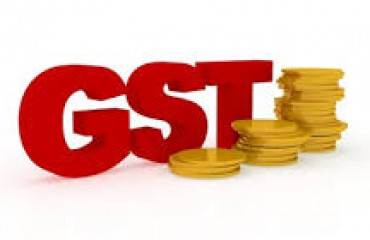
The Union government and states will implement a proposed structural revamp of the
goods and services tax (GST) in phases, keeping in mind the impact tax rate changes
can have on consumption, according to two officials.
The Union government and states will implement a proposed structural revamp of the goods and services tax (GST) in phases, keeping in mind the impact tax rate changes can have on consumption, according to two officials.
The proposed revisions will include pruning tax exemptions, removing anomalies from taxing raw materials and intermediates higher than finished products, and reducing the number of GST slabs, said one of the officials, who spoke on condition of anonymity.
The revisions are currently being studied by two ministerial panels and will entail implementing the tax rate changes needed in the textile industry to correct the inverted duty structure, which have been kept on hold. On 31 December, the council deferred a rate hike from 5% to 12% on several items in the textile and apparel sector, including woven fabrics of cotton, silk and wool, coir mats, apparel and clothing accessories of sale value up to ₹1,000, which was to take effect from 1 January.
An email sent to the finance ministry seeking comments for the story remained unanswered at the time of publishing. One major shift in the circumstances favouring implementing further structural changes in GST is the expiry of GST compensation to states in June this year, a major concern for states. That would leave a big gap in state budgets, especially of large state economies, which need to find ways of raising revenue receipts. That makes rate and slab rationalization and revenue augmentation methods agreeable to states. Besides, the Centre's practise of borrowing from the market to meet the shortfall in compensation for 2/4 FY21 and FY22 have improved Centre-state relations. The GST Council had, in an earlier meeting, decided to collect the GST compensation cess levied on items like automobiles till March 2026, but the proceeds will be used only to repay the loans taken in FY21 and FY22.
"The main concern of states is the expiry of GST compensation in June. Even though the cess collection has been extended, it will only raise adequate resources for paying back the loans already raised. The only way out is to augment revenue from GST, which can be done in one of two ways. It can be done administratively, or you make your rate structure efficient—that is, remove exemptions, cut duty inversions and reduce the number of slabs," the official said.
The official said many of the duty inversions have already been corrected, and there is a limit to how much revenue augmentation can be done administratively. "Eventually, you have to fix the rate structure. The group of ministers are likely to come out with a road map. They may not want to do everything in one go. It will be phased. But it has to happen. How they sequence, we do not know yet, but there is this realization that they have to do it now. There is no escape," the official said, adding that concerns about private consumption recovery lagging behind other growth drivers will be factored into while finalizing the proposals.
During post-budget interactions with the industry this month, revenue secretary Tarun
Bajaj asked business leaders to share their views with the ministerial panels examining
GST rationalization. Karnataka chief minister Basavaraj Bommai leads a panel of state
ministers on tax rate rationalization, while Maharashtra deputy chief minister Ajit Pawar
heads a panel on GST system reforms. The panels are likely to give their reports this
month.
